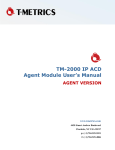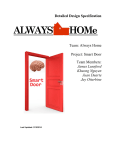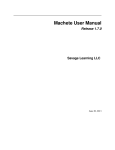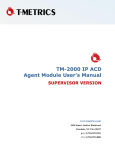Download Machete User Manual - Log on to hire a Casa Latina worker.
Transcript
Machete User Manual Release 1.9.1 Savage Learning LLC March 10, 2014 CONTENTS 1 Introduction 1.1 How does Machete work? . 1.2 How do I login to Machete? 1.3 User Accounts . . . . . . . 1.4 Bilingual Support . . . . . . 1.5 Work flow . . . . . . . . . . . . . . . . . . . . . . . . . . . . . . . . . . . . . . . . . . . . . . . . . . . . . . . . . . . . . . . . . . . . . . . . . . . . . . . . . . . . . . . . . . . . . . . . . . . . . . . . . . . . . . . . . . . . . . . . . . . . . . . . . . . . . . . . . . . . . . . . . . . . . . . . . . . . . . . . . . . . . . . . . . . . . . . . . . . . . . . . . . . . . . . . . . . . . . . . . . . . 1 1 1 2 2 2 Interface Overview 2.1 Navigation Menu . . . . . 2.2 Page Tabs . . . . . . . . . 2.3 Required Fields . . . . . . 2.4 Discard Changes Warning 2.5 DataTables . . . . . . . . . . . . . . . . . . . . . . . . . . . . . . . . . . . . . . . . . . . . . . . . . . . . . . . . . . . . . . . . . . . . . . . . . . . . . . . . . . . . . . . . . . . . . . . . . . . . . . . . . . . . . . . . . . . . . . . . . . . . . . . . . . . . . . . . . . . . . . . . . . . . . . . . . . . . . . . . . . . . . . . . . . . . . . . . . . . . . . . . . . . . . . . . . . . . . . . . . . . 5 5 6 7 8 8 3 Home Page 3.1 Home Page Tabs . . . . . . . . . . . . . . . . . . . . . . . . . . . . . . . . . . . . . . . . . . . . . 11 11 4 Terminology 4.1 Person Record . . . . 4.2 Worker Record . . . . 4.3 Employer Record . . . 4.4 Work Order Record . 4.5 Pending Orders . . . . 4.6 Active Orders . . . . . 4.7 Complete Orders . . . 4.8 Cancelled Orders . . . 4.9 Expired Orders . . . . 4.10 Work Assignment . . 4.11 Dispatch . . . . . . . 4.12 Worker Sign-in Record 4.13 Skills . . . . . . . . . 13 13 13 13 13 13 13 13 14 14 14 14 14 14 2 . . . . . . . . . . . . . . . . . . . . . . . . . . . . . . . . . . . . . . . . . . . . . . . . . . . . . . . . . . . . . . . . . . . . . . . . . . . . . . . . . . . . . . . . . . . . . . . . . . . . . . . . . . . . . . . . . . . . . . . . . . . . . . . . . . . . . . . . . . . . . . . . . . . . . . . . . . . . . . . . . . . . . . . . . . . . . . . . . . . . . . . . . . . . . . . . . . . . . . . . . . . . . . . . . . . . . . . . . . . . . . . . . . . . . . . . . . . . . . . . . . . . . . . . . . . . . . . . . . . . . . . . . . . . . . . . . . . . . . . . . . . . . . . . . . . . . . . . . . . . . . . . . . . . . . . . . . . . . . . . . . . . . . . . . . . . . . . . . . . . . . . . . . . . . . . . . . . . . . . . . . . . . . . . . . . . . . . . . . . . . . . . . . . . . . . . . . . . . . . . . . . . . . . . . . . . . . . . . . . . . . . . . . . . . . . . . . . . . . . . . . . . . . . . . . . . . . . . . . . . . . . . . . . . . . . . . . . . . . . . . . . . . . . . . . . . . . . . . . . . . . . . . . . . . . . . . . . . . . . . . . . . . . . . . . . . . . . . . . . . . . . . . . . . . . . i ii CHAPTER ONE INTRODUCTION Machete is a web application customized to manage a day labor referral service. Machete tracks work order requests made by employers looking for short term, casual labor. It also provides a means for matching laborers with specific skillsets to requests made by employers for skilled casual labor. Machete performs the following tasks: 1. Stores basic contact information for all persons associated with the Machete system 2. Stores biographical and membership information on for all members associated with the organization 3. Records daily member attendance using an identification number through either a bar code scanner or the keyboard 4. Captures employer, work order, and work assignment details into a relational database 5. Provides a fast, flexible method of dispatching workers to work orders based on English level, skill level, and employer requests 6. Captures class, assembly, and special activity attendance 1.1 How does Machete work? Machete is a client/server web application that supports most major web browsers (Firefox, Chrome, Safari, and Internet Explorer). Machete is installed on an IIS web server and connected to a MS-SQL database. Many clients can simultaneously use Machete as long as they have reliable network connectivity between the web client and the server. The web client/server framework provides a great deal of flexibility, but also comes with it’s own quirks and restraints. 1.2 How do I login to Machete? To access Machete, use a compliant web browser and go to the Machete web server URL. Your site administrator will be able to tell you the URL to access your instance of Machete. You will need a login and password to sign in to Machete. You can register for an account by clicking in the Logon link in the upper right hand corner of the Machete page. A manager or dispatcher will need to give your account permission to use Machete. 1 Machete User Manual, Release 1.9.1 1.3 User Accounts To access Machete, a user must create a user account AND an administrator must grant privileges to access certain facets of the system. There are two methods of creating a Machete account: 1. The user may click on the Register link. This link will prompt the user to give their email and create a password, as well as give their first and last name. Using a real first and last name is important because the name of the user will be logged whenever he or she makes a change to a record. 2. A user may also click on the Google or Microsoft buttons at the bottom of the Register page. This will allow the user to automatically sign in with the contact information and details of their Google or Microsoft accounts. Machete User Log-On Page More detailed user account management information is available in the Configurations Page section. 1.4 Bilingual Support Machete has the capability to support muliple display languages. As of 2013, it supports English and Spanish. More languages can be added in future updates. The links to switch between English and Spanish are in the upper right hand corner of every page. A user can switch between English and Spanish anywhere in the application. 1.5 Work flow Machete manages work orders through a simple work flow process. Work orders start the process marked as Pending until they have sufficient information to proceed. Once orders are ready, they are marked Active, making their assignments visible on the Dispatch Page. From the Dispatch Page, workers are assigned to assignments for a given day. Print-outs of the orders are given to the workers, who travel to the work site and perform work for the employer. 2 Chapter 1. Introduction Machete User Manual, Release 1.9.1 Managers and Dispatchers review the orders and mark then Complete or Cancelled. The information is captured in Machete’s database and used for reporting. The diagram below illustrates the basic work flow of creating orders in Machete. At the end of the process, the Manager marks that the order is complete by activating the order. Active orders are visible in the Dispatch page and are able to be assigned workers. Machete workflow 1.5. Work flow 3 Machete User Manual, Release 1.9.1 4 Chapter 1. Introduction CHAPTER TWO INTERFACE OVERVIEW The Machete interface is a combination of multiple technologies: HTML, jQuery, and DataTables. A lot of functionality is packed into the page, so to describe it properly, the following diagram identifies and labels the various functional points. The subsequent paragraphs describe the functions in more detail. 2.1 Navigation Menu Every Machete page has a row of gray boxes which is known as the Navigation Menu. each box contains an HTML link to a different Machete page, providing access to various areas of the application. The links cause the browser to load a new HTML page. This refreshes all the information on the page from the server. Clicking on the link for the page you are already viewing will cause the page to be re-loaded and refreshed. 2.1.1 Reports Page The Reports Page includes a variety of internal reports on amount of jobs dispatched, average wages, total earnings, activity attendance, and others. Reports are categorized by time period: Daily, Weekly, Monthly, and Yearly. Reports on the data that Machete collects are also available through any SQL-compliant tool. Administrators and Managers may use SQL Server Reporting Services (SSRS), but this is a separate component, not available with the free version of SQL Server. 5 Machete User Manual, Release 1.9.1 2.1.2 Employers Page The Employers Page provides access for searching, creating, editing, and deleting employer records. The Employers Page is also the primary location for users to create work orders and work assignments. The work order and work assignment creation is embedded in the employer page because work orders and assignments are always associated with a particular employer. 2.1.3 Work Orders Page The Work Order Page provides summary and management functionality for work orders. It does not provide creation functionality - see the Employers Page for more information. 2.1.4 Dispatch Page The Dispatch Page show side-by-side the list of workers signed in to Machete for the day and the list of work assignments that need to be filled. The page provides several methods of filtering the lists to find workers with skills necessary for an assignment. It also provides an interface for recording lottery selections using a bar code scanner. 2.1.5 Persons Page The Persons Page provides access for searching, creating, editing, and deleting person records. It also provides access for creating worker records, events, and managing a person’s activity attendance. This functionality is located in the Persons Page (and not the Workers Page) because a person record must be created first. A worker record is created afterward. 2.1.6 Workers Page The Workers Page provides access for searching, editing, and deleting worker records. The Worker Page allows users to search by worker name and membership number, and the list can be sorted in various ways. 2.1.7 Activities Page The Activities Page manages activities within Machete. Users can create, edit, and delete Activity records. The Activities Page also registers members’ attendance for a given activity. Activity registration works in the same manner as the daily attendance registration on the Worker Sign-in Page. 2.1.8 Worker Sign-In Page The Worker Sign-In Page records daily registration of workers into Machete using either aa bar-code scanner or the membership number of the worker, entered manually by keyboard. Each worker must sign-in to Machete to be eligible to participate in activities and receive work assignments. 2.2 Page Tabs Within each page, Machete uses tabs to divide different areas of functionality.Each page in Machete has its own tabs with functions specific to the page. Subsequent sections of the User’s Manual will define and discuss page-specific tabs. 6 Chapter 2. Interface Overview Machete User Manual, Release 1.9.1 Tabs are intentionally designed to reload automatically so that information is current. Employer and work order lists will refresh automatically to include newly created records as soon as the user has saved the record. When the user returns to a previous tab, that tab will also be re-loaded. Each page has a set of default tabs that cannot be closed, as well as contingent tabs that temporarily display records for particular work orders, employers, people, and activities. Machete page tabs on the Employers Page. Note that the List Employers and Create New Employers tabs c 2.3 Required Fields Some fields are required in order to save a record. If a user attempts to save the record without filling out a required field, the field is highlighted in red and an error message is displayed. 2.3. Required Fields 7 Machete User Manual, Release 1.9.1 Required fields exist to ensure that all necessary information for processing an order or managing a worker is collected. 2.4 Discard Changes Warning All pages in Machete detect when changes are made to a record and warn you if you attempt to leave a page without saving the record. When a change is detected, the Save button changes color from blue to green, indicating a Save is necessary. If the user attempts to leave the page, a dialog box asks the user to verify if the really intended to leave without saving the changes. Note: This dialogue box does NOT allow users to save their changes. The user must click “Cancel” and then click the save button, located on the top-left part of the tab. 2.5 DataTables Machete includes specialized functions that were created using the DataTables technology. 2.5.1 Search Box Each page in Machete includes a search box, which automatically searches the page’s list of records for text as it is being entered. There is a 400 ms second delay on searching, to reduce the load on the Machete database. Most fields displayed in the list will be searched, with the exception of ‘Updated by’ fields. These fields are seldom searched and increase search load for all searches, so they are excluded. 2.5.2 Table Entries Per Page This option controls how many rows are displayed in a table at a given time. The default number is set relatively low because it reduces processing load and time on the server. 8 Chapter 2. Interface Overview Machete User Manual, Release 1.9.1 2.5.3 Pagination The pagination arrows move through pages of table data. Each click will make a call to the database to fetch a new set of records to display in the table. 2.5. DataTables 9 Machete User Manual, Release 1.9.1 10 Chapter 2. Interface Overview CHAPTER THREE HOME PAGE The Home Page offers a landing page for Machete news and information when a user logs into their account. The Home Page can also be accessed at any time during a Machete session by clicking on the Machete logo at the top-left corner of the interface. 3.1 Home Page Tabs The home page contains a number of tabs that provide general information on Machete. 3.1.1 Machete News The Machete News Tab contains information about the latest updates to Machete. This information is static HTML and is updated by editing the /Views/Home/Index.cshtml file in the IIS Machete directory. 3.1.2 Issue Tracker The issue tracker tab is a simple tab that contains an external link to an open source issue tracker page. Internet access is required to access this link. 3.1.3 Wiki The Wiki tab contains an external link to this User Manual’s Wiki page, hosted on github.com. 3.1.4 Documentation The documentation tab contains links to PDF and Zip versions of this documentation, generated using automated tools from the Machete Wiki. 3.1.5 About The about tab contains basic information about Machete including the technology used to create it and the origin of the name. 11 Machete User Manual, Release 1.9.1 12 Chapter 3. Home Page CHAPTER FOUR TERMINOLOGY Within Machete there are some terms that have a specific meaning. 4.1 Person Record A person record contains basic information about an individual in Machete. 4.2 Worker Record A worker record is a companion to the person record and is linked to the person record. 4.3 Employer Record An employer record is a person or business that calls to hire a worker. 4.4 Work Order Record A work order record is a request by an employer for one or more workers. 4.5 Pending Orders A pending order is a new order, or an incomplete order, or an order not yet marked active. 4.6 Active Orders An active order is an order that has at least one work assignment and has been marked active. 4.7 Complete Orders A complete order has had all of it’s assignments filled with workers and marked as complete. 13 Machete User Manual, Release 1.9.1 4.8 Cancelled Orders Orders cancelled by the employer 4.9 Expired Orders Orders that could not be fulfilled (either because no worker was available, or no worker with the specific skill required could be found in time for the job). 4.10 Work Assignment A work assignment is part of a work order. One assignment is created for each worker needed. 4.11 Dispatch Dispatch is the process of assigning a worker who has signed-in for the day to an active work assignment. 4.12 Worker Sign-in Record A sign-in occurs when a worker signs in to Machete. A sign-in is required for the worker to appear in the Machete Dispatch page. 4.13 Skills Every work assignment requires the selection of the skills necessary to complete the work. Some skills are general skills, such as digging, that any worker can fulfill. Other skills are specialty skills, which limit which workers are eligible to be assigned to the work assignment. 14 Chapter 4. Terminology


































